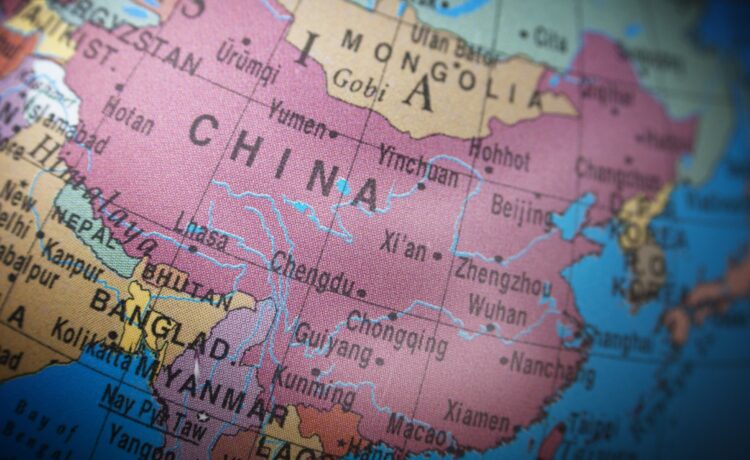Investors looking for potential growth and diversification may find it in emerging markets. These economies, mostly found in Asia, Africa and Latin America, have a burgeoning, young population of middle-class consumers who can help their markets grow at a faster pace than in developed countries. Additionally, most US investors’ portfolios are overweight to domestic equities, so adding emerging markets funds offers the chance for diversification and growth.
Investing in emerging markets in 2024 is relatively easy because many mutual funds and exchange-traded funds (ETFs) offer low-cost ways to get broad exposure. Investors can use actively managed funds, narrowly focused funds that invest in certain themes or passive index funds, such as the Vanguard FTSE Emerging Markets ETF (VWO), one of the largest emerging markets funds by assets.
While investing in emerging markets is straightforward, it takes some due diligence to understand where they fit into your diversified portfolio.
What are emerging markets?
Emerging markets encompass a group of developing nations with lower per capita income than developed markets and are spread across Latin America, Asia, Africa and Europe, said Karti Bhatt, client portfolio manager at Wasatch Global Investors.
“They have higher nominal gross domestic product (GDP) growth during their earlier stages of development, which means there’s a lot of growth opportunity,” he said. “These less-mature economies have good, long runways to reach that mature level of economic growth.”
Emerging markets as an investing concept has been around since 1988, when indexing firm MSCI introduced the MSCI Emerging Market Index, one of the most commonly followed indexes for this sector. The index now includes 24 countries:
- Brazil
- Chile
- China
- Colombia
- Czech Republic
- Egypt
- Greece
- Hungary
- Indonesia
- India
- Korea
- Kuwait
- Mexico
- Malaysia
- Peru
- Philippines
- Poland
- Qatar
- Saudi Arabia
- South Africa
- Thailand
- Turkey
- Taiwan
- United Arab Emirates
Emerging versus developed market classifications
MSCI differentiates between emerging and developed market classifications using three key criteria:
- Economic development
- Size and equity market liquidity
- Market accessibility for foreign investors
Market accessibility is what delineates between an advanced economy and an advanced stock market, according to MSCI.
A good example is South Korea, said Alison Shimada, senior portfolio manager and head of the total emerging markets equity team at Allspring Global Investments, who has invested in the region for 37 years. South Korea has a fairly developed commercial economy and is home to some of the biggest international companies, such as Samsung, but it remains classified as an emerging market. From a stock market viewpoint, there’s not as much visibility into how some of the big South Korean conglomerates do business and earn money, she said.
The country has been under consideration for an upgrade since 2009, but, as of MSCI’s 2023 market classification review, it hasn’t happened yet.
The appeal of investing in emerging markets
Shimada said there’s a lot going on in emerging markets that makes them appealing to investors.
- Demographic change: Many of these countries have young populations that are moving into the middle class with increasing incomes and growing industrial development. Investor interest in these regions is rooted in this idea of demographic change: As people move into the middle class, they will demand more services, such as financial and medical services, and spend more on education. With higher incomes, there is greater discretionary spending as well. “You have a lot of intellectual capital in some of these countries, you have a lot of financial capital, as well, and a lot of potential for growth,” she said.
- Shift towards consumption: Many emerging markets have been export-dominated, especially in commodities, but she said that’s changing as well, particularly in countries such as China, India and South Korea.
- Diversification: Bhatt said in addition to the outlook for long-duration growth based on the growing economies, emerging markets offer diversification for US investors because the two markets are generally not correlated.
The risks of investing in emerging markets
The potential for growth comes with its own set of risks.
- Geopolitical risk: Headline and geopolitical risks are an issue, Shimada said. Saber-rattling between China and the US ebbs and flows, and there are sometimes concerns that Taiwan could come under attack. Russia’s invasion of Ukraine over two years ago also burned some emerging market investors who did not sell their Russian holdings before the country attacked and had to mark those assets to zero value. “These things are scary to people. It’s difficult to understand the full picture, which is why people tend to avoid” the region, she said.
- Currency risk: Currency risk is another issue, as the strength or weakness of the US dollar against emerging market currencies may affect returns — positive or negative.
- Country risk: There’s also country-level risk of investing in some emerging markets, such as liquidity concerns in local stock markets, government intervention in markets or certain industries and types of events that can affect the free flow of capital.
For example, some emerging market countries backslide, such as Argentina, which was once considered an emerging market but is now relegated to “standalone markets” status by MSCI. Standalone status can apply to new markets or “may occur in the case of severe deterioration in market accessibility or size and liquidity,” according to MSCI. She said that currency controls and other capital restrictions led to Argentina’s downgrade.
Performance history of emerging markets
In the early 2000s, emerging markets saw a heyday as strong commodity prices and export-fueled growth helped many emerging market economies rise. In particular, Brazil, Russia, India and China, known as the BRICs, were the darling of investors.
Bhatt said the period between 2000 and 2010 marked the rise of China as a global consumer and Brazil as a top commodities exporter, while Russia’s economy was also going strong. A weaker dollar also helped emerging markets thrive.
Since then, emerging markets have underperformed US markets, especially as the technology boom supported stock markets and the greenback gained ascendancy.
According to its factsheet, the MSCI Emerging Markets Index had an annualized net return of 3.3% over the past 10 years, while the MSCI ACWI Index, a global index, had an annualized return of 9.2%. That’s compared to the S&P 500 index’s return of 10.7%.
However, Bhatt said, the broader weakness in emerging markets underscores individual country’s returns. Much of the recent weakness in emerging markets is due to China’s sluggish economy, he added. Meanwhile, countries such as Brazil and Mexico outperformed the US’s stock market in 2022.
“If you look at individual countries, you’ll see a lot more disparity. It’s not a monolith,” he said.
Current opportunities in emerging markets
That lagging return is one reason why a number of investors have lost interest in this sector. But Shimada said the tide might be turning for emerging markets. There are bargains to be had in the sector, as valuations are significantly lower than in the US.
Price-to-earnings (PE) multiples, which measure stock price values against earnings per share, are around 15.6 times in emerging markets, as of March 2024, compared to 23.6 times for the S&P 500 and 30.9 times for the Nasdaq 100. She noted that the concentration risk, or the small number of stocks that are driving market returns, is also high in the US.
Emerging markets may do well as the need for more powerful semiconductors and the growth of artificial intelligence (AI) becomes an even bigger market theme. “The supply chain for Nvidia (NVDA) and its beneficiaries is actually in Asia. So you’re missing a large part of that opportunity if you’re not invested in Asia,” she said.
Bhatt said his firm sees lots of strength in many of India’s sectors, such as health care and finance, that have benefitted from the structural changes there, including giving each person digital IDs so they can start using banking services. They also like e-commerce players in Latin America.
Strategies for investing in emerging markets
Mutual funds and ETFs
Investing in individual emerging markets stocks is difficult for the average investor, so mutual funds and ETFs are often the most effective way to do it.
- Look for funds with high assets under management.
- Choose actively managed or passive funds as you do your research. If you choose an actively managed portfolio, seek managers with long track records, preferably those that have consistently beaten most peers or their respective index.
- Determine how much to invest in emerging markets, depending on your goals, risk tolerance and time horizon. As a percentage, you can allocate about 5% to 10% of the international portion of your portfolio to the region, Bhatt and Shimada said.
Frequently asked questions (FAQs)
Emerging markets can offer diversified growth because of their growing middle classes and young demographics. After lagging the US for a decade, emerging markets valuations are inexpensive in comparison.
Your risk appetite and time horizon should be considered because emerging markets are generally more volatile. Then, consider if you want to focus on a particular region, such as Latin America or Asia, or if you want broad exposure.
Start by considering your total asset allocation and how much you want to devote to the sector. Between 5% and 10% of your total international investment sleeve is a good place to start. Look for a diversified fund that can give you broad exposure.






